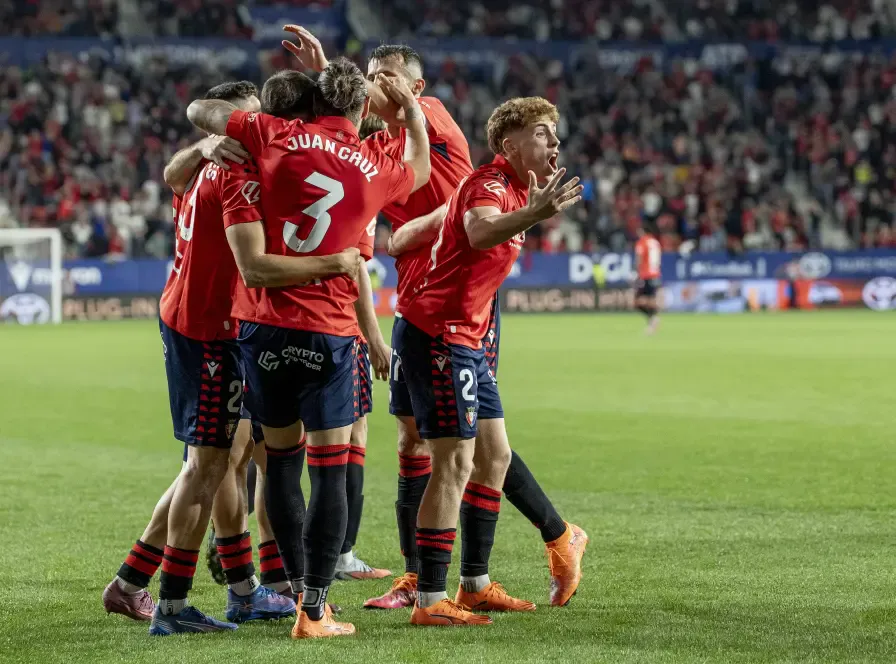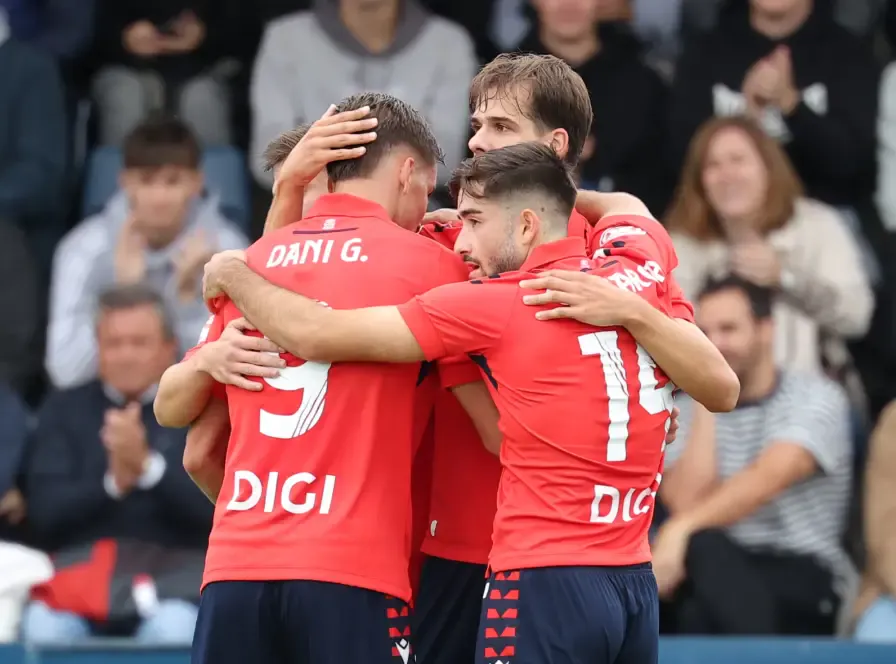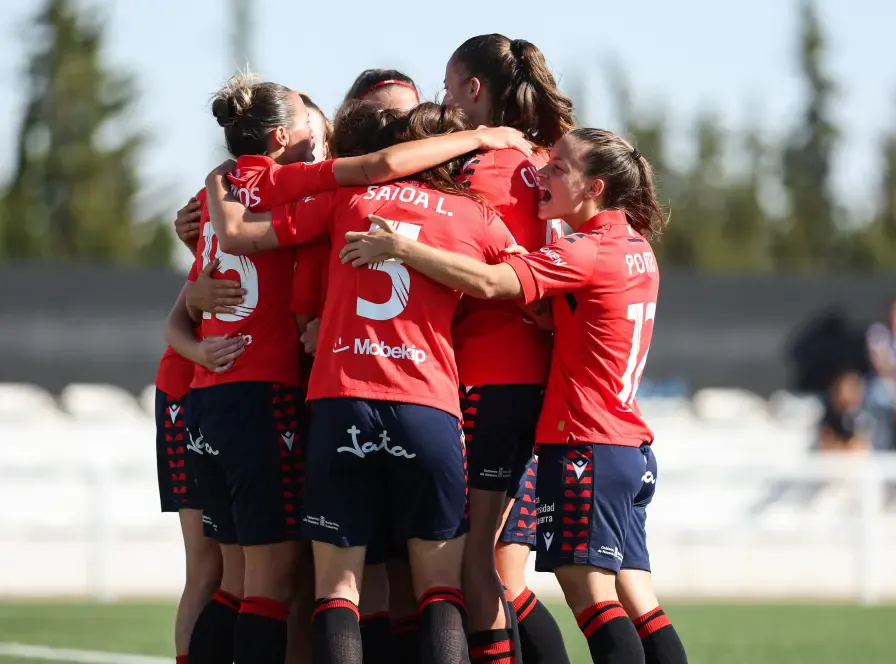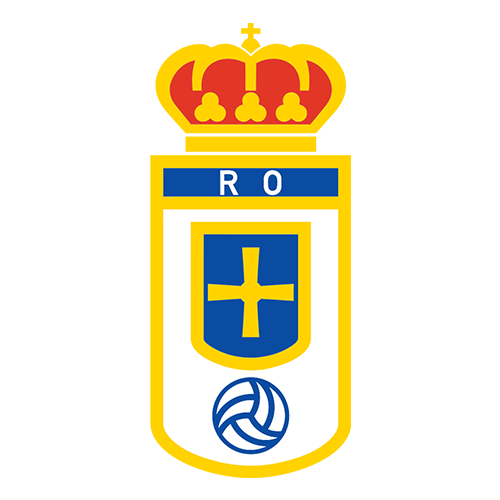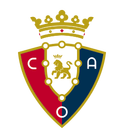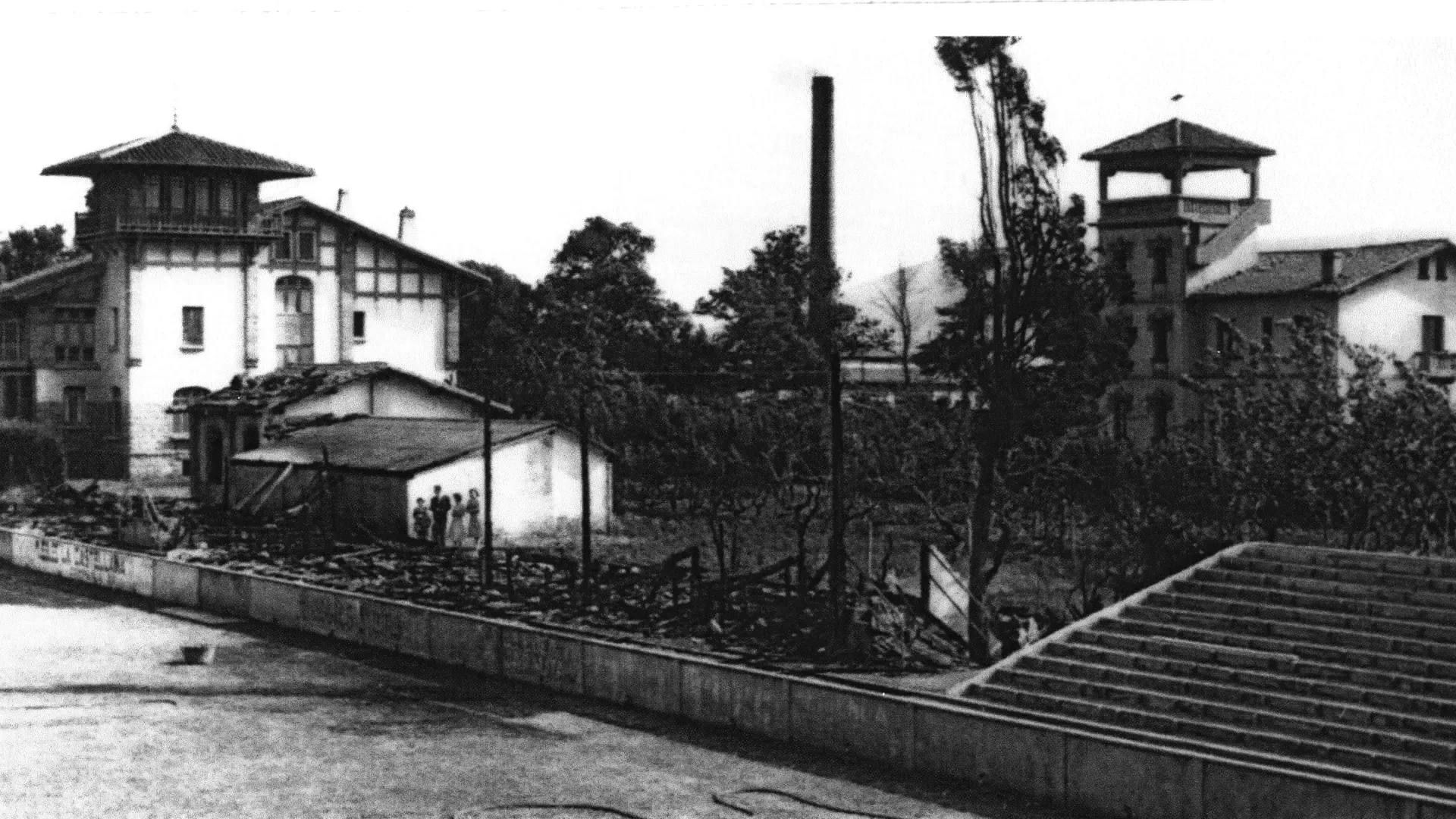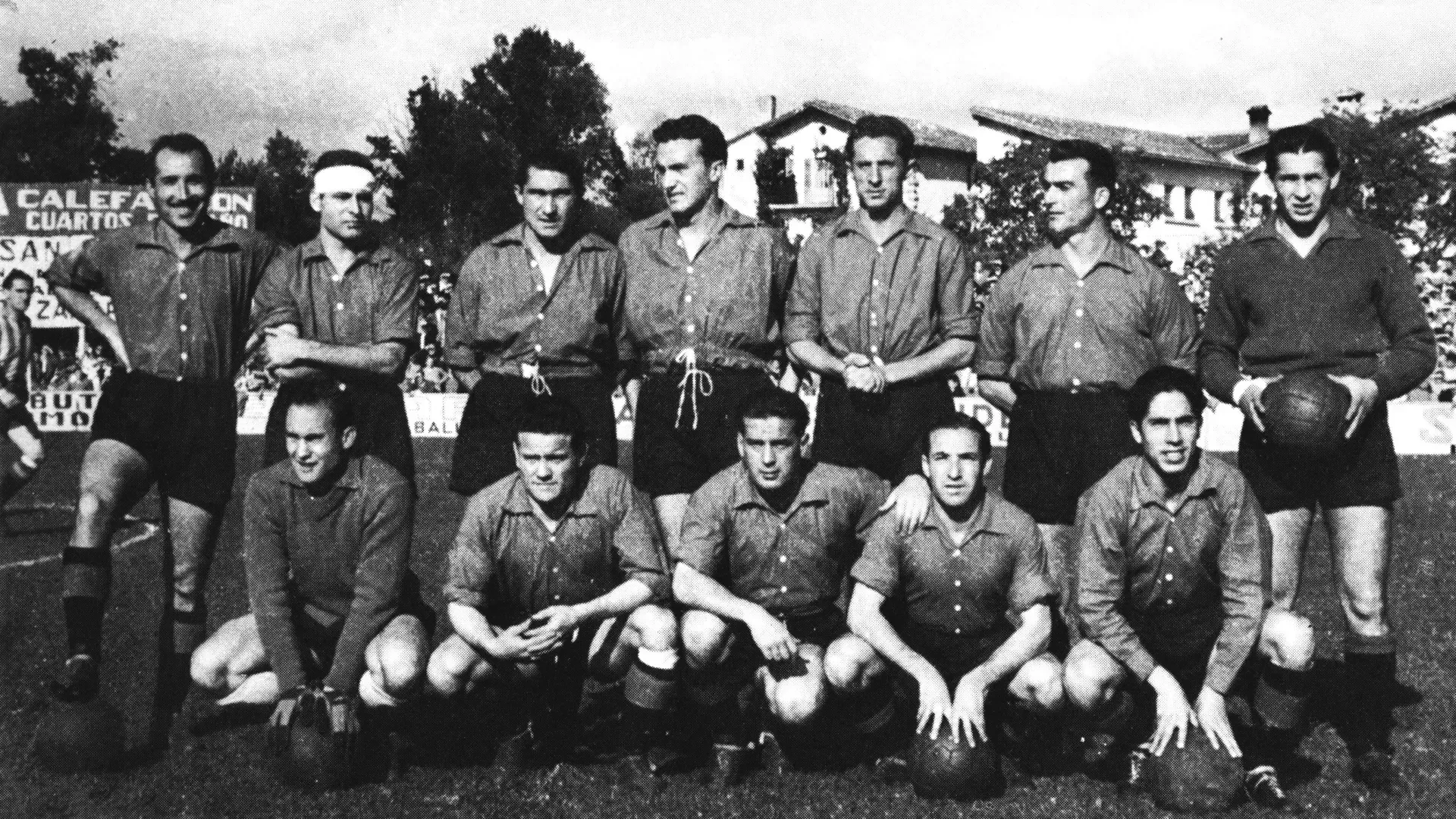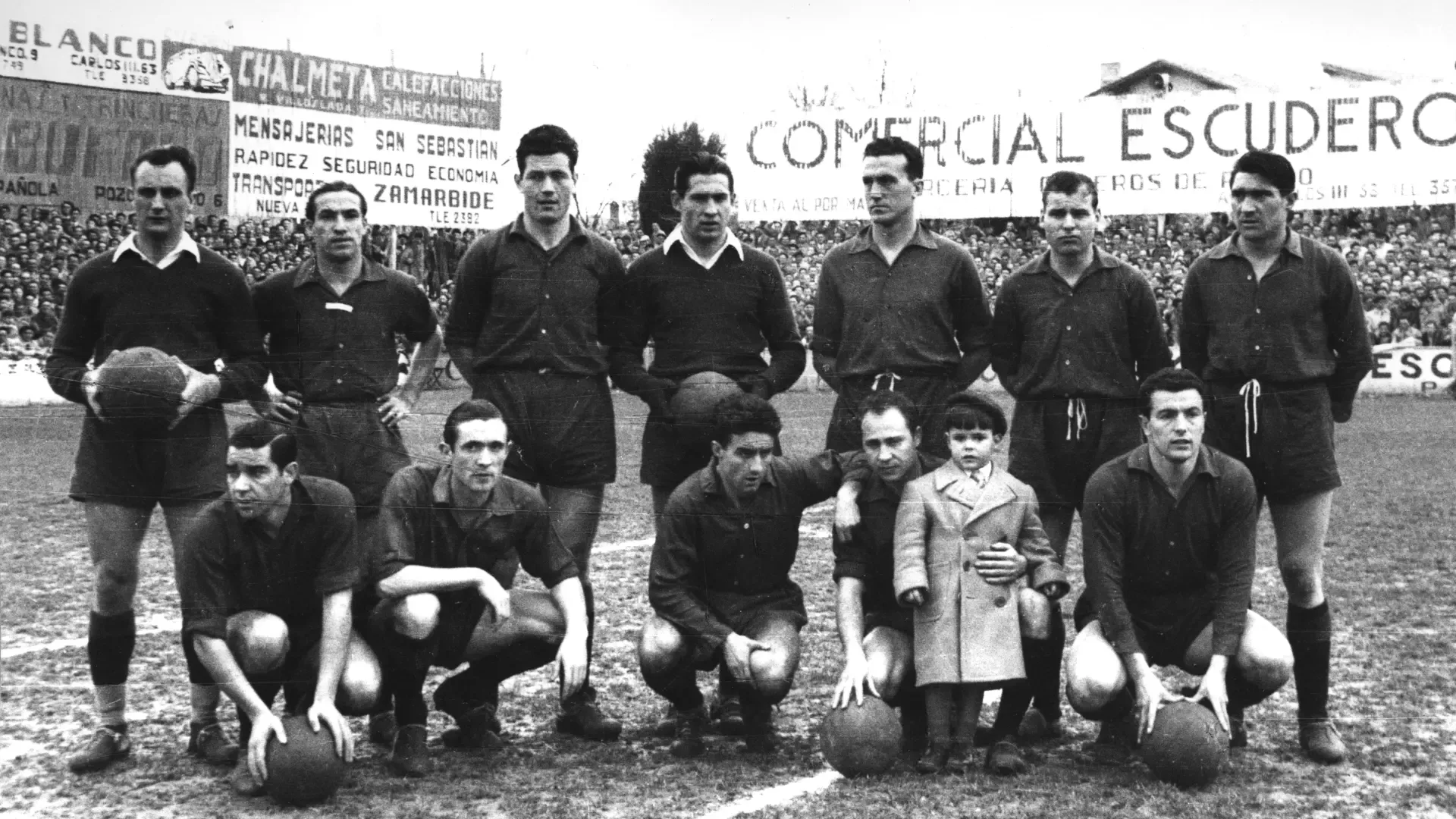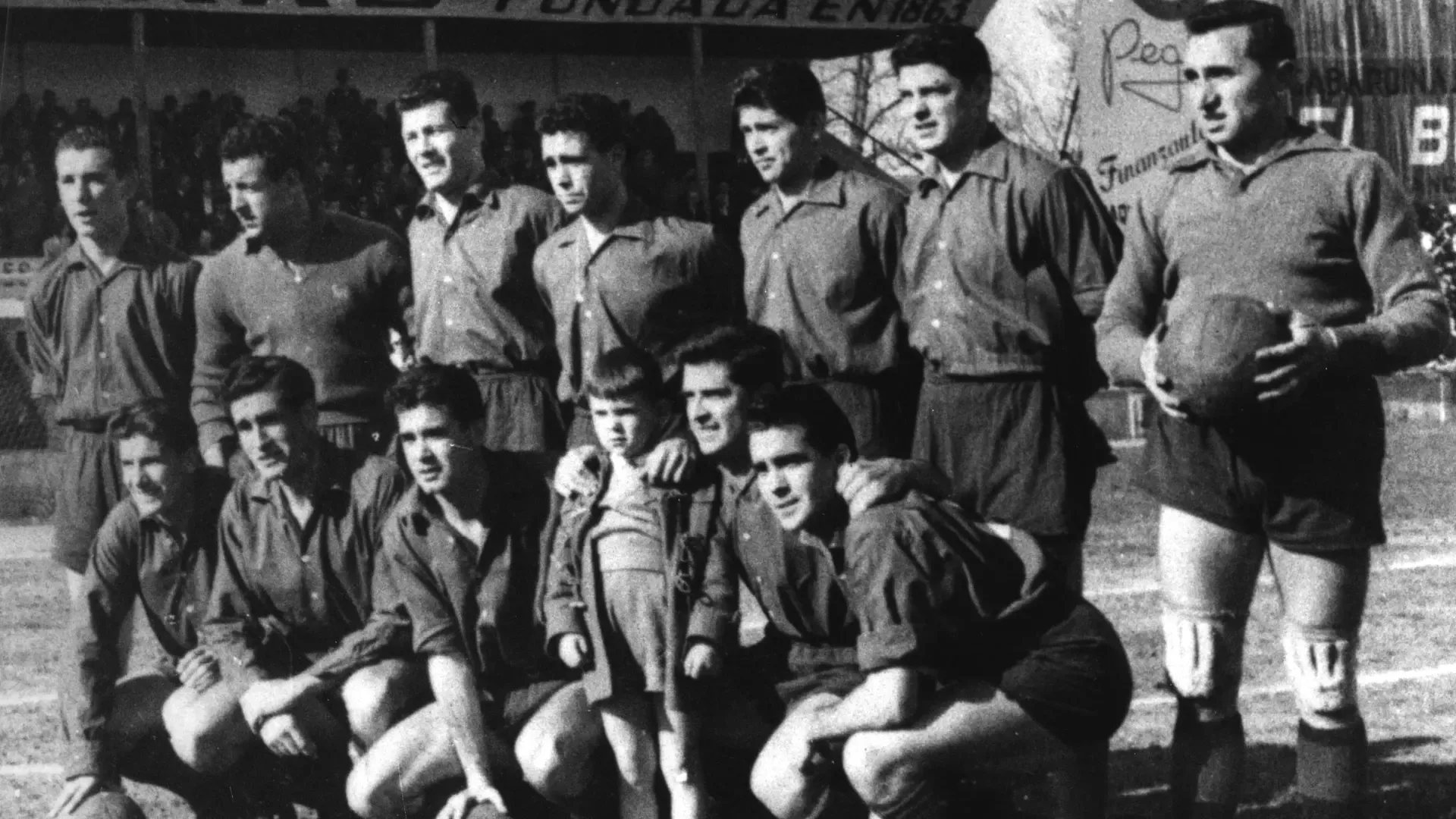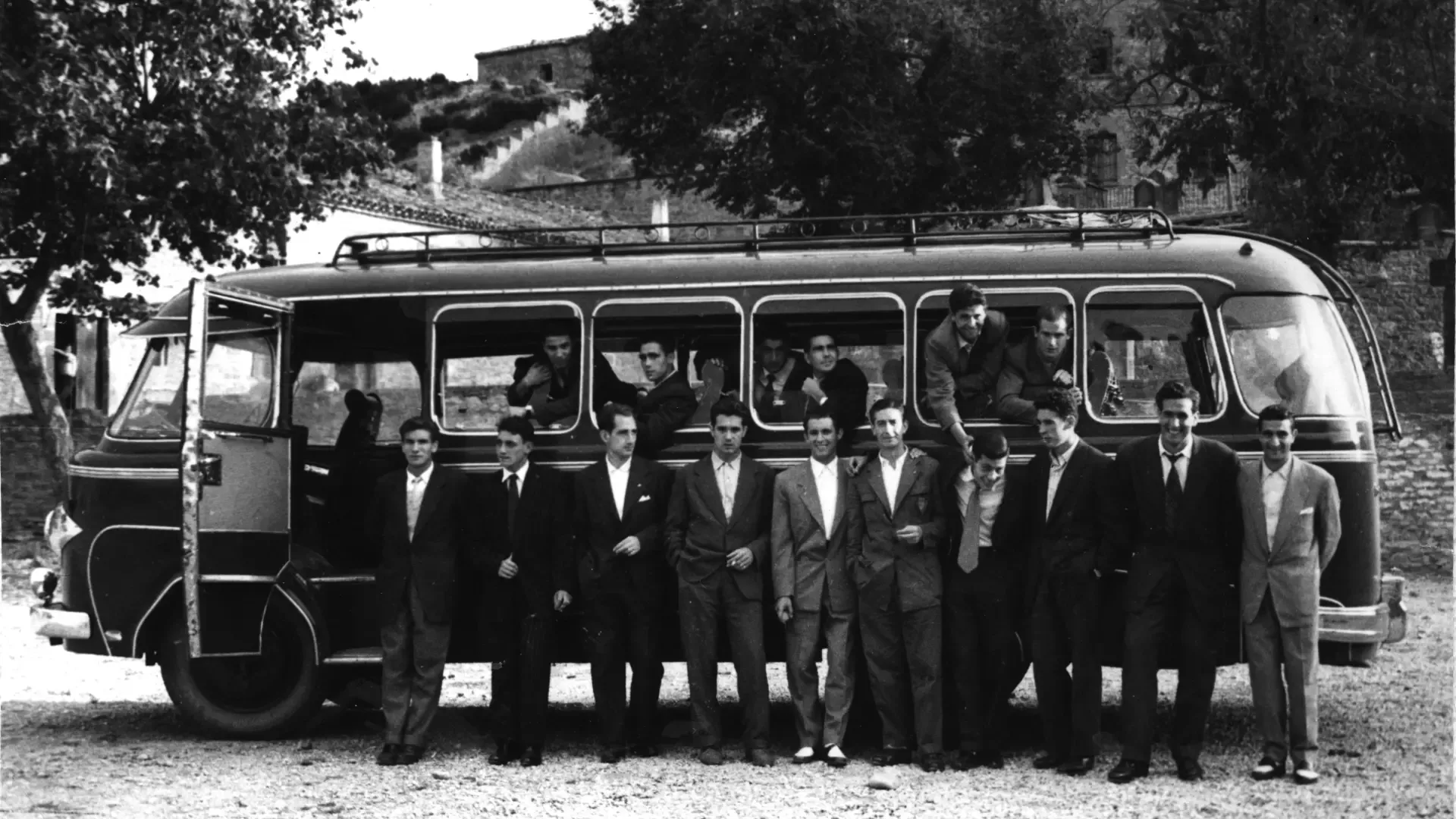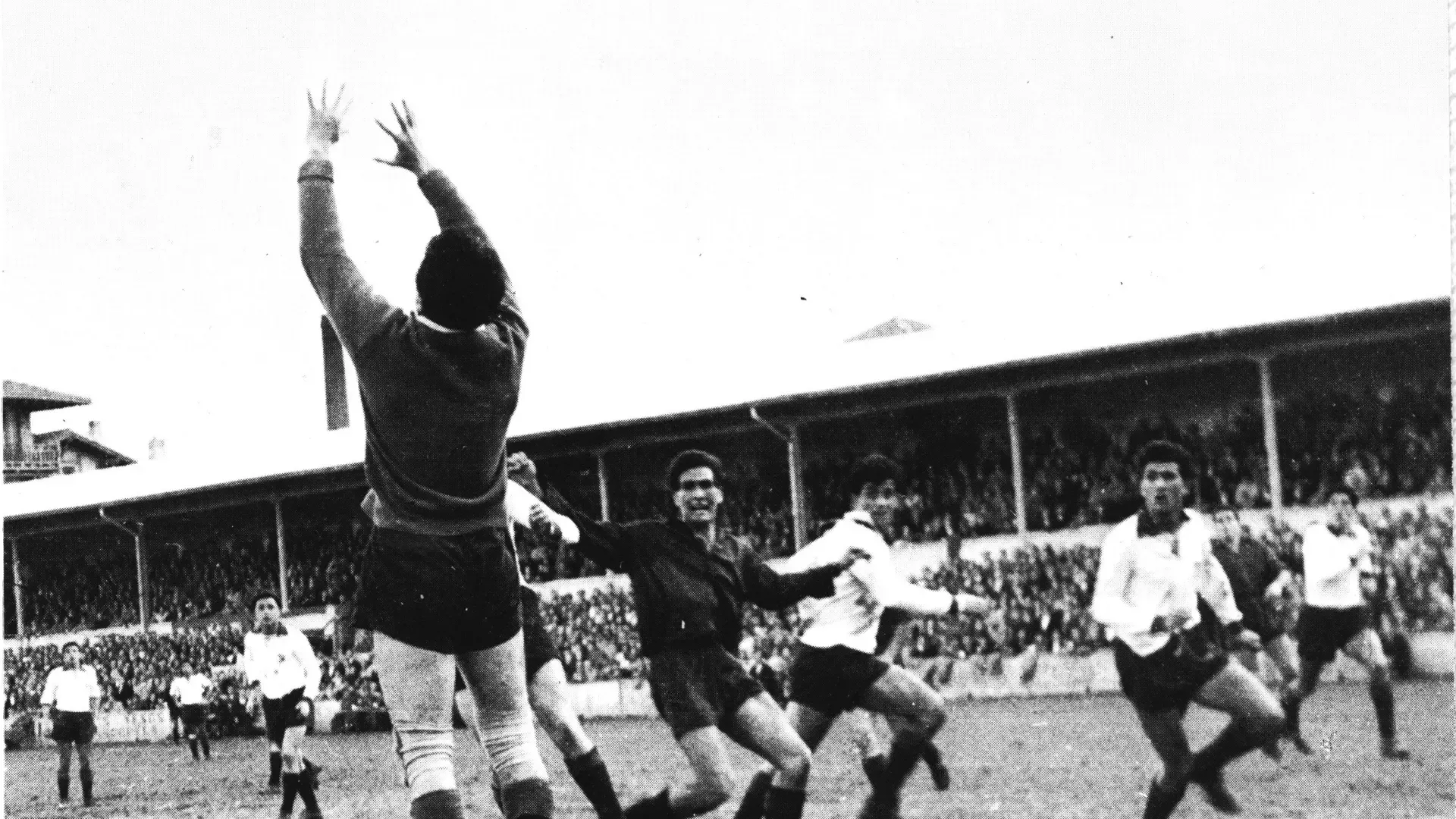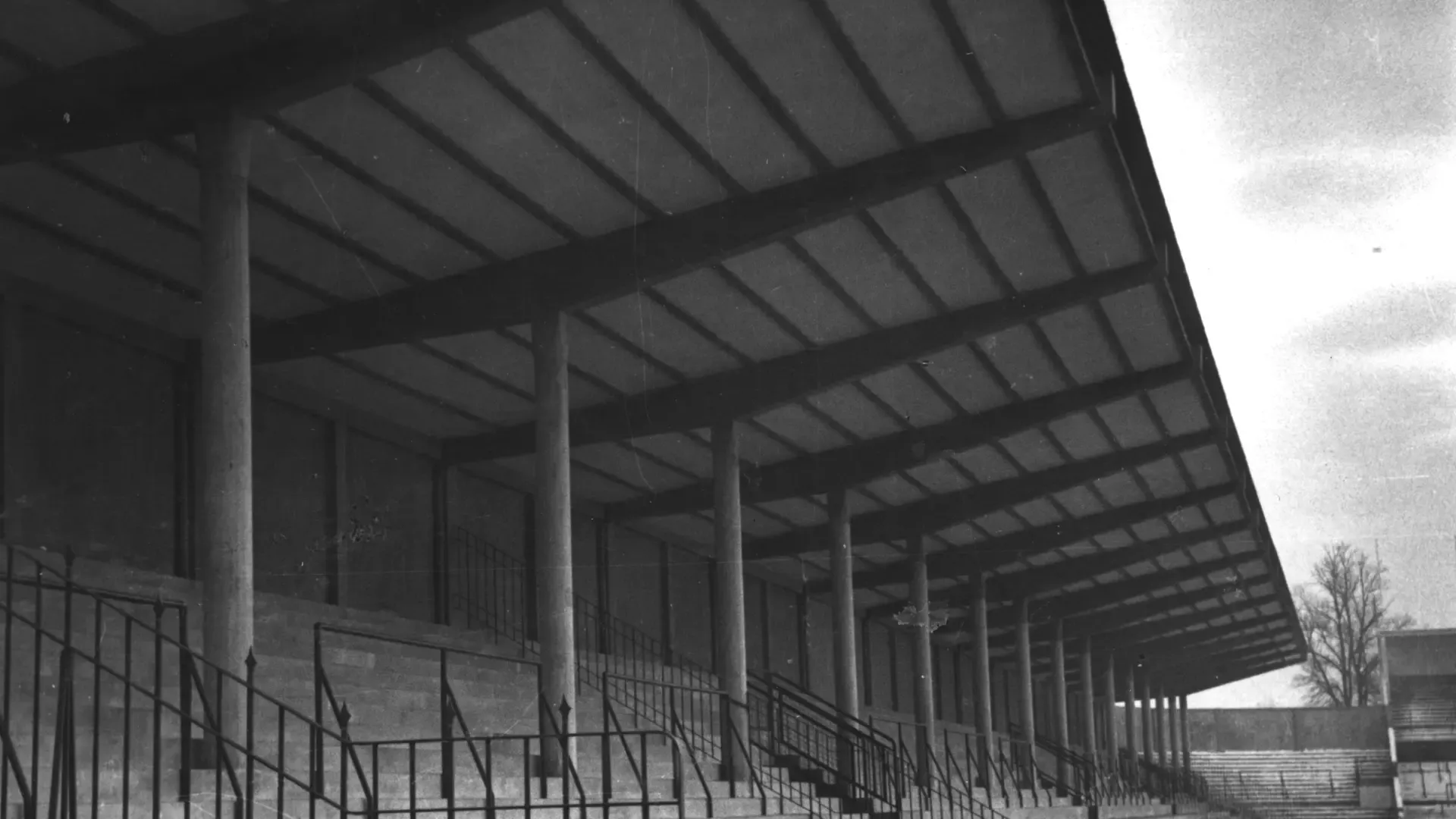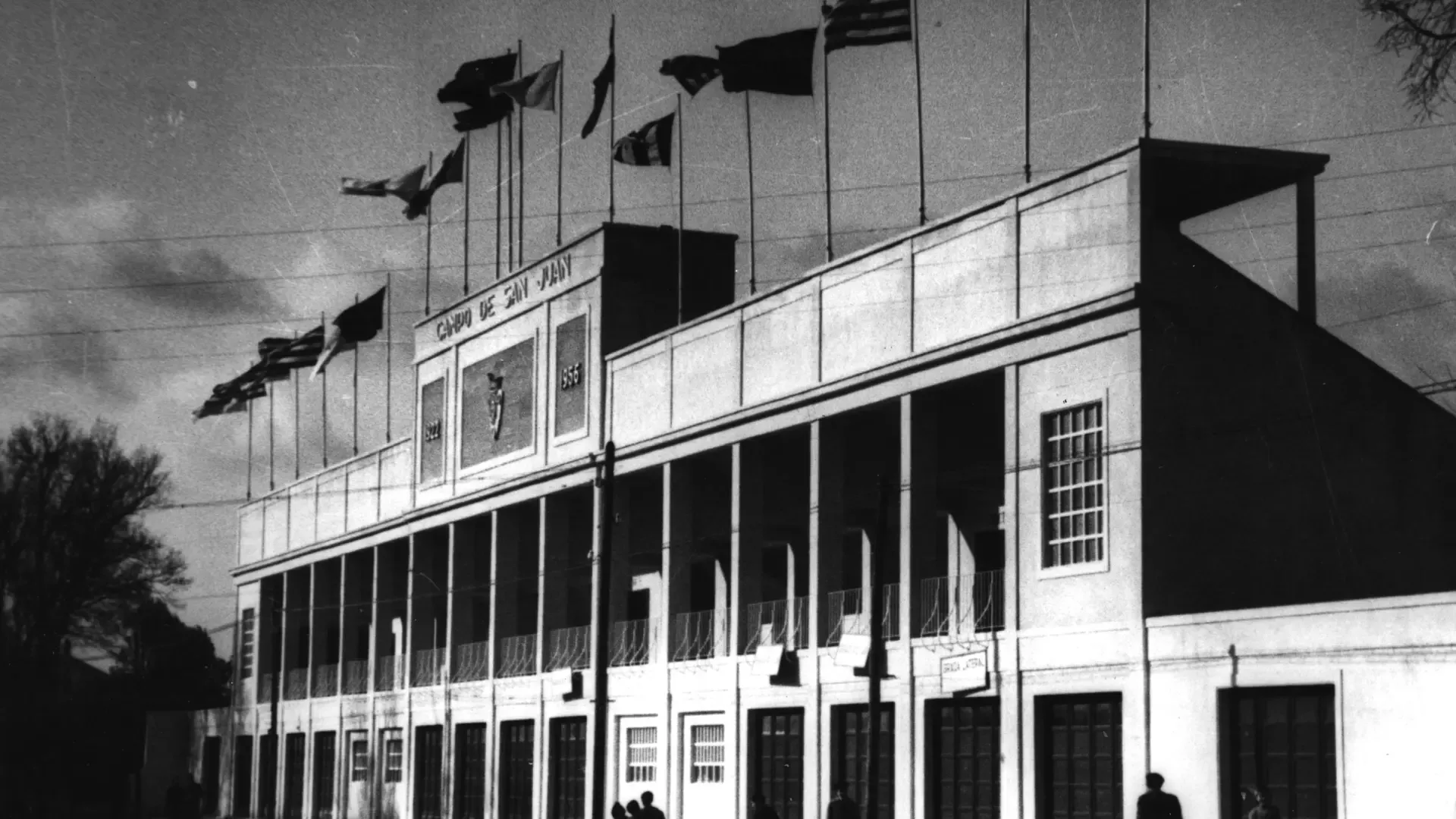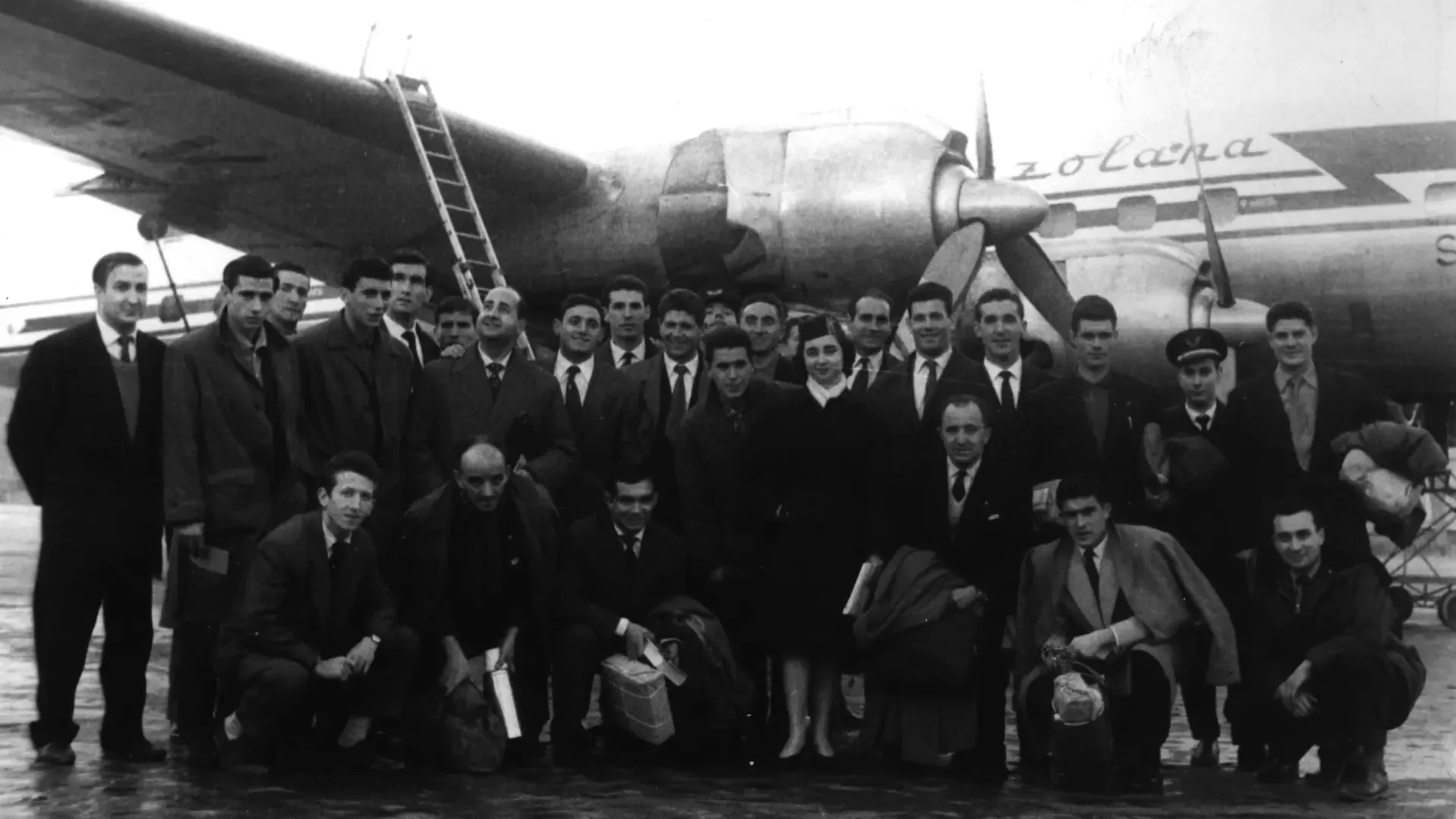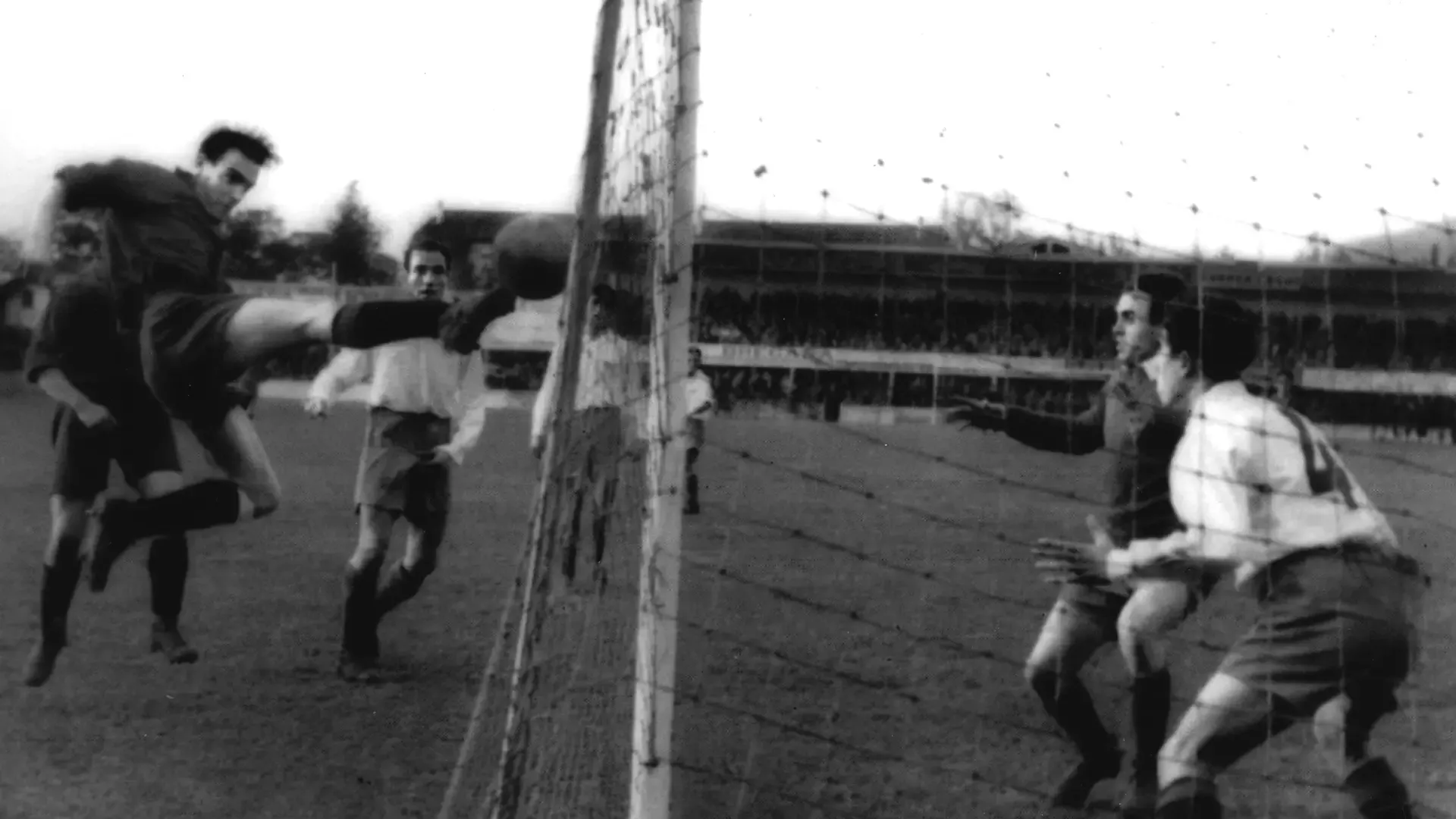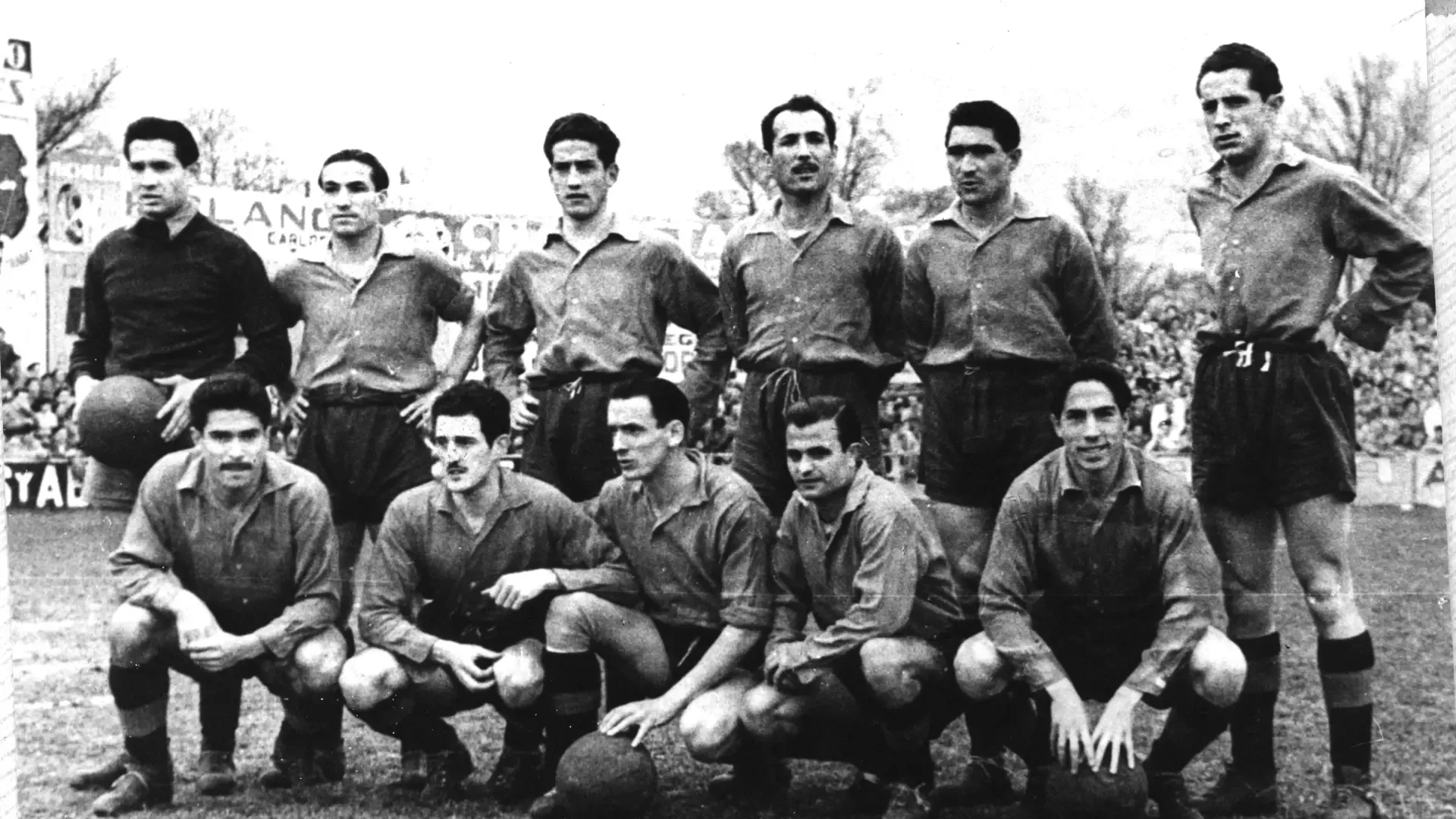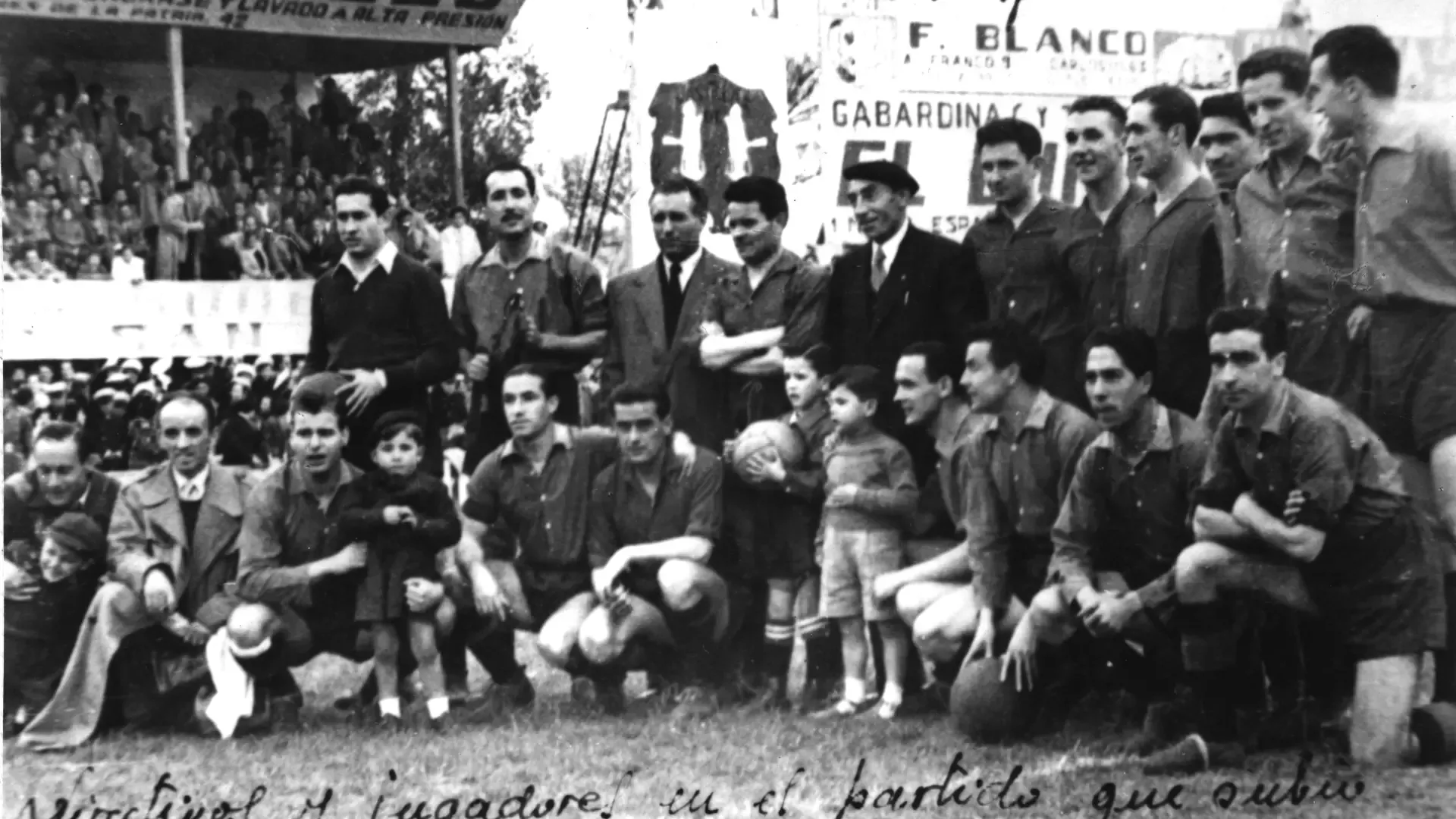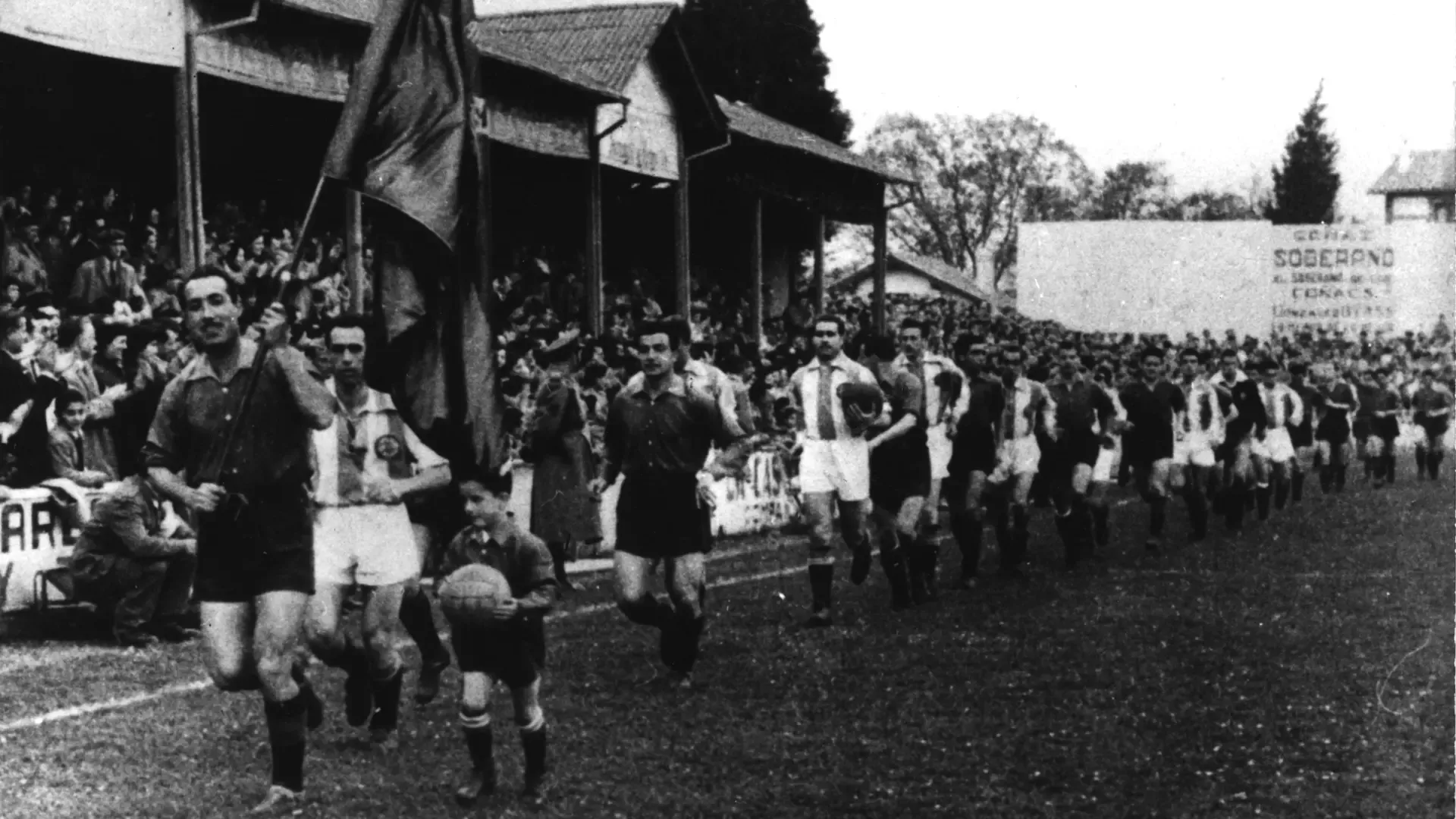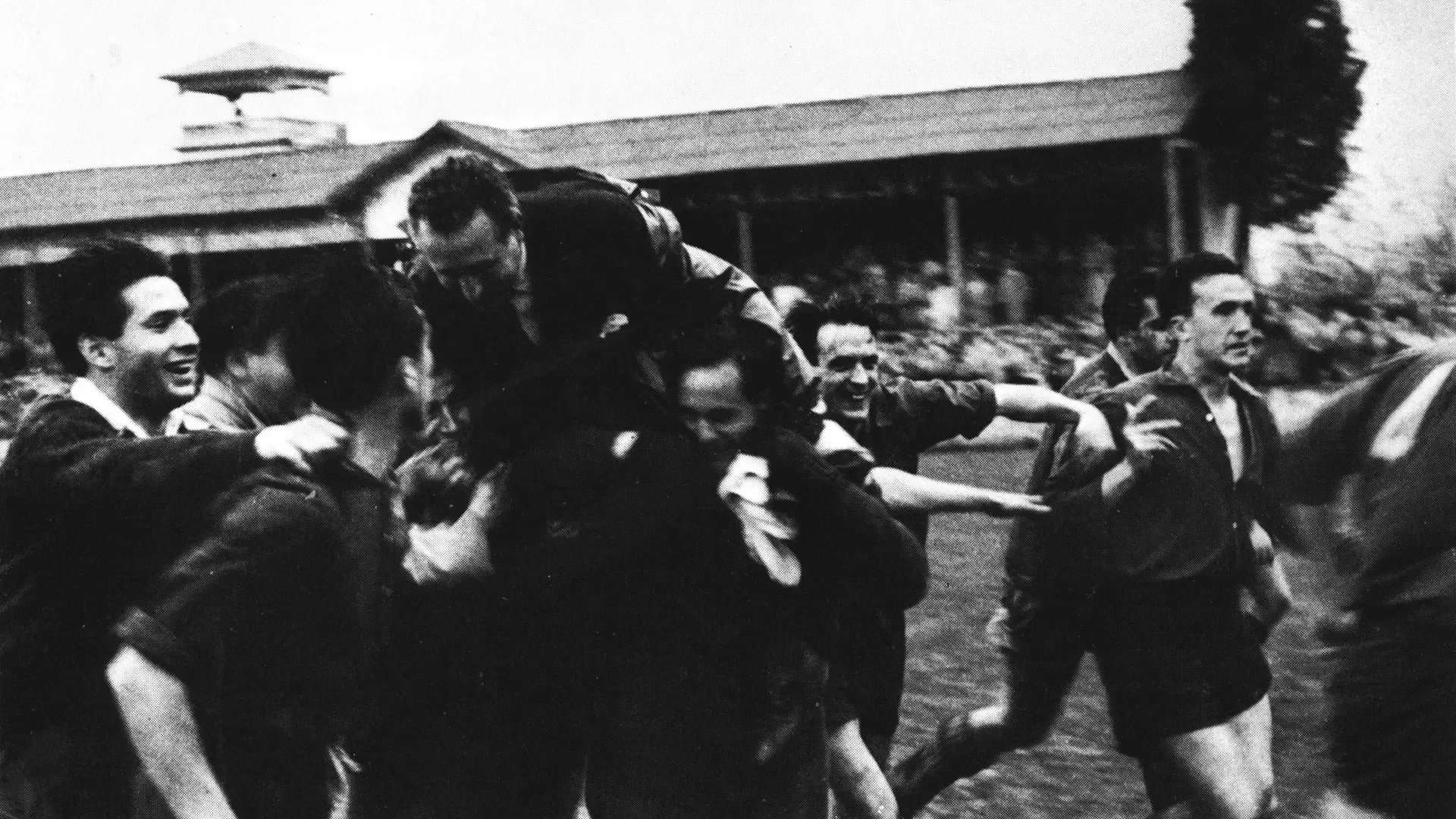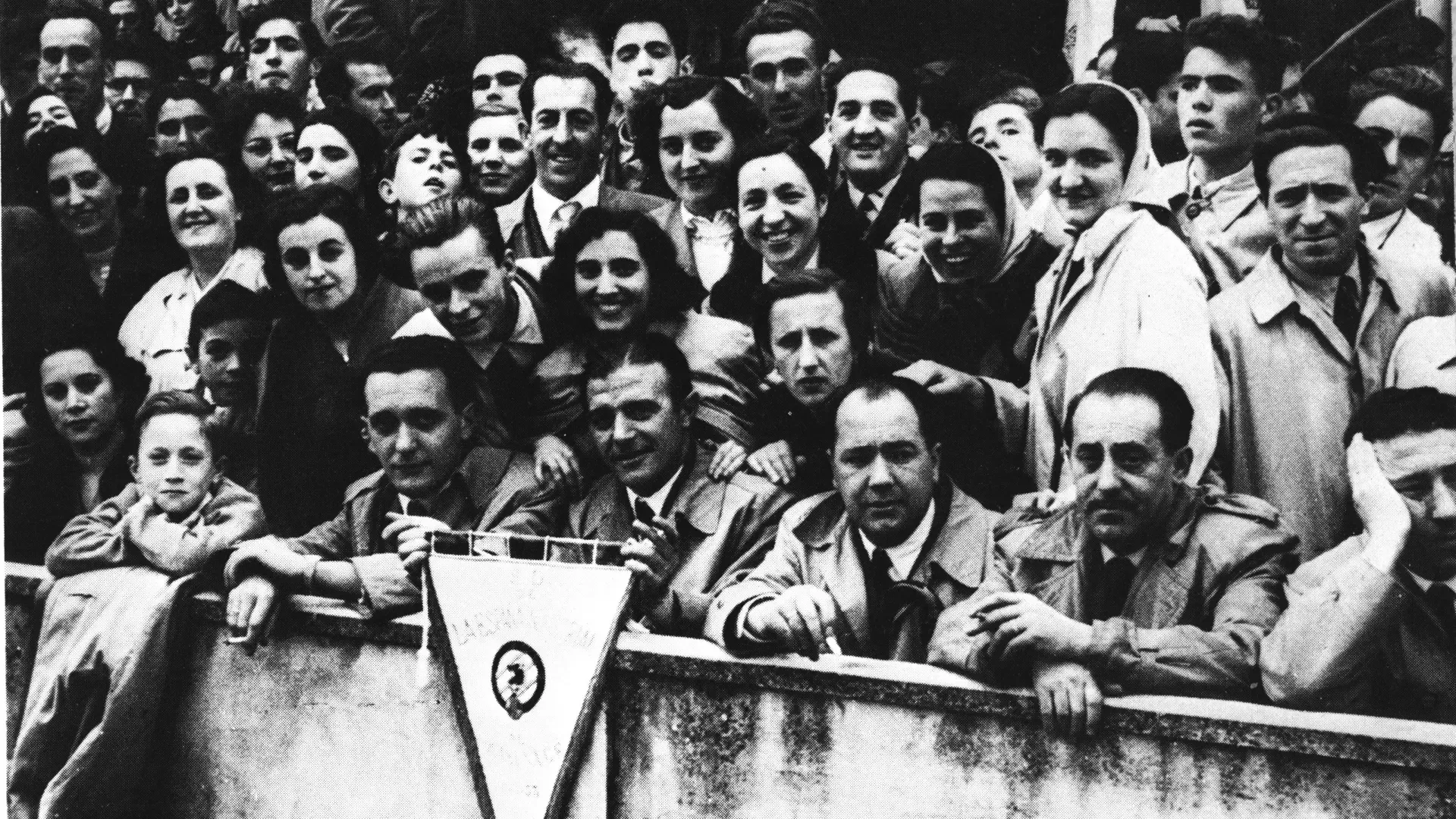1950's
the awakening
The 1950s marked the awakening of Club Atlético Osasuna, which had suffered severely during the post-war years. After seasons mired in struggle, the promotion to LaLiga in 1953 triggered an explosion of joy. The streets of Pamplona erupted like never before, and San Juan became a cauldron of celebration. Osasuna was back in the top flight, eighteen years after their only previous stint in the elite (1935/36).
The long-awaited return was sealed after a resounding victory over Salamanca in the penultimate matchday of the league, played at San Juan on April 26, 1953. That historic day, Osasuna lined up with the following eleven: Goyo; Salvatierra, Fandós, Barragán; P. Gastón, Goñi; Pauet, Zubeldía; Fustero, Madariaga, and Ríos.
One image would live on in Osasuna folklore: captain Vicente Fandós, the proud native of Castellón, waving the Osasuna flag high during the celebrations after the final home match against España Industrial.
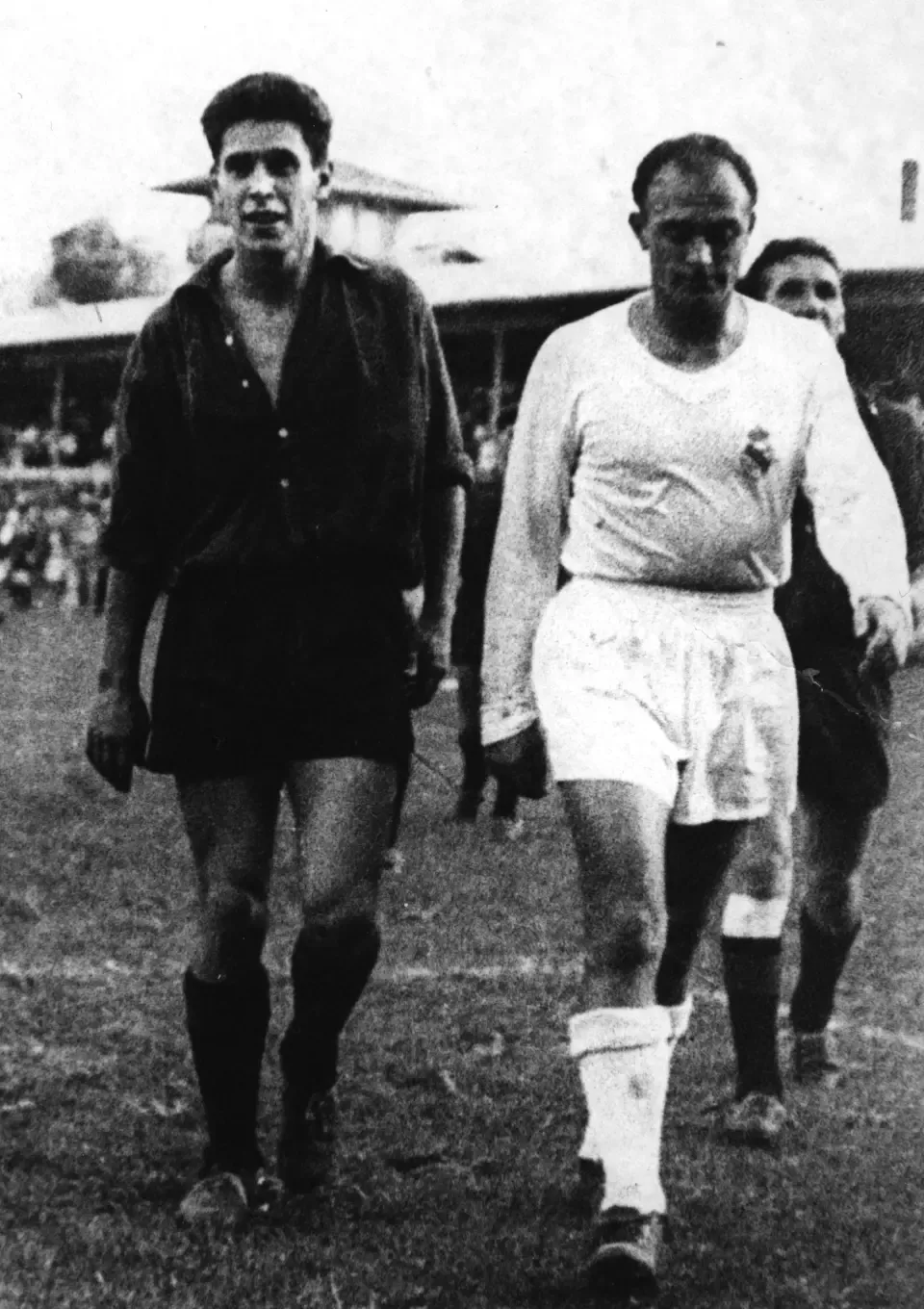
Despite the team's relegation in the 1953-54 season, a star was born-Sabino Andonegi, one of the club's historic strikers. The Mutriku native, during his 10 years as a Rojillo, scored 127 goals in 235 official matches, leaving an unforgettable legacy. His skills, particularly his unique heading abilities, set him apart as the club's second top goal scorer, behind Julián Vergara, a record that no other player has been able to match.
Sabino Andonegui's heading abilities delighted Osasuna fans for 10 seasons, where the Mutriku native scored 127 goals in 235 official matches.
After two years in Segunda División (1955-57), young starlets such as Adolfo Pérez Marañón, Pablo Recalde, and Pedro María Egaña emerged to support players like the Galaría brothers and Manolo González. For the first time in its history, Osasuna found stability in Primera División, remaining in the top tier for four consecutive seasons (1956-60). During this period, Los Rojillos finished the 1956-57 and 1957-58 seasons in sixth and fifth place, respectively. At that time, only the top three teams were eligible to compete in international tournaments, such as the European Cup or the Inter-Cities Fairs Cup.
Additionally, Osasuna made its first trip to America to participate in the Copa de Navidad in Venezuela. In Caracas, the team faced losses against Malmoe (Sweden), 2-1, and Bangu (Brazil), 1-0. Despite these defeats, Los Rojillos received strong support from the Navarrese community living in the Americas.
